Support Us
Since 1979 more than 140,000 animals have been treated by Wildlife Rescue.
Thanks to the support of individuals like you, Wildlife Rescue can provide a lifeline for animals in distress.
Watching an animal arrive at the Wildlife Hospital in critical condition, recover, and return to the wild is one of the most rewarding parts of wildlife rehabilitation. Occasionally, we’re treated to something even more special: hearing that a past patient is not just surviving but thriving, even decades later!
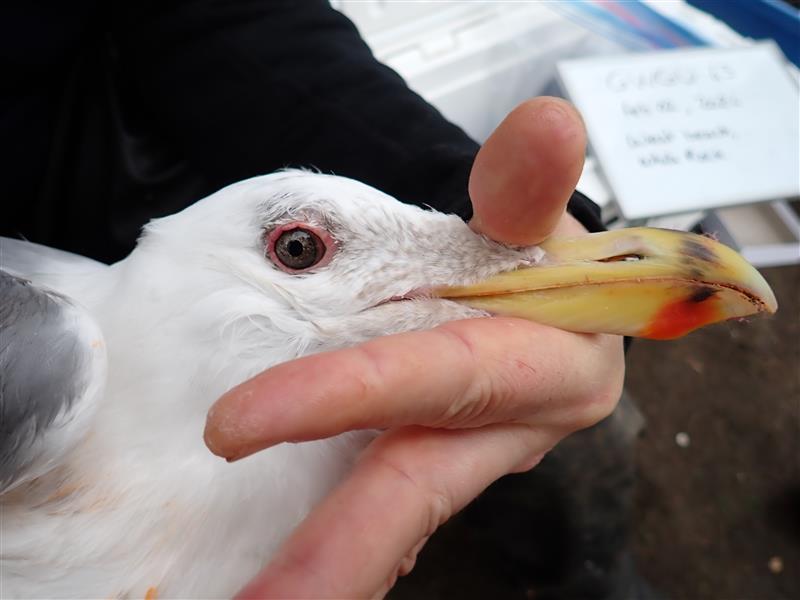
In August of the year 2000, a young Glaucous-winged Gull was found orphaned in Vancouver and brought to Wildlife Rescue by a worried wildlife friend. Thanks to the community’s support, the gull received a second chance and was raised at the Wildlife Hospital. The bird learned how to swim and forage, and received expert care to grow into a healthy, strong juvenile. After a month in care, the gull had developed all the critical skills needed to survive in the wild.
Just prior to being successfully released at Belcarra’s shoreline, the bird was banded by Master Bander Liz Thunstrom. The purpose of banding is to gain knowledge about the survival rate of birds treated in care after being released into their natural habitats. It helps researchers understand how well orphaned birds raised in captivity adapt to life in the wild, and how those that have recovered from ailments go on to succeed in the wild.
Fast forward to February 2024: the now mature gull was recaptured in White Rock by researchers from Environment and Climate Change Canada (ECCC) as part of their Salish Sea Gull Project.* The bird was fitted with several new coloured bands to make them easily identifiable from a distance and was spotted in White Rock again in September.
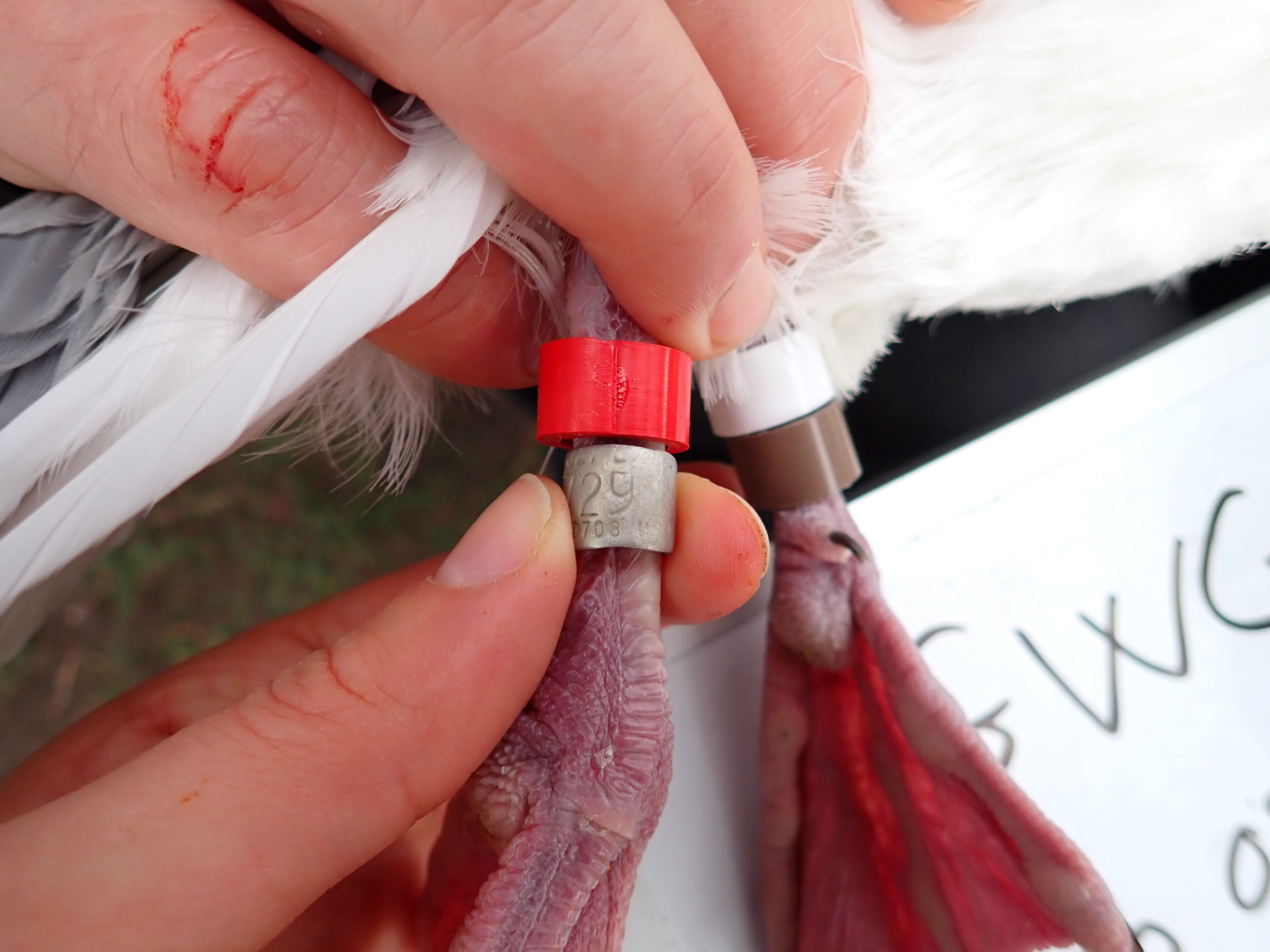
“I was very surprised and pleased to hear of this recapture report after 24 years! This more than exceeded my hopes for its future when the bird was originally released back into the wild after banding,” said Thunstrom. “It would be interesting to know what experiences the bird had in those years and how many young it produced in that time, but most satisfying is that it survived and did so well!”
The Salish Sea Gull Project is an integral part of the Salish Sea Marine Bird Monitoring and Conservation Program. This five-year initiative is especially significant as gull species are protected under the Migratory Birds Convention Act of 1994 and have been identified as a stewardship priority by ECCC.
“[We are] conducting research on Glaucous-winged Gulls as indicators of the health of the Salish Sea, the idea being that if the ocean is healthy, the birds will be healthy,” said Dr. Mark Hipfner, ECCC Research Scientist. “As part of the larger project, we are banding gulls with unique combinations of colour bands to quantify age-specific survival rates. This individual confirms for us that these gulls can live good, long lives.”
Have you seen a banded gull? Your sighting could help conservation efforts! Report colour-banded gulls to the Salish Sea Gull Project and contribute to ongoing research.
Learn how to report sightings here.
*This research project was conducted under the appropriate permits.
In late February, Wildlife Rescue was alerted to a Great Blue Heron whose beak was badly entangled in netting. Our rescue team was dispatched immediately to assess the situation and attempt rescue. However, since the bird was fully flighted, capture was proving difficult— the bird would simply fly off when approached.
It took two-long weeks, but thanks to our highly skilled and experienced rescue team, the entangled heron was successfully captured! While originally spotted in Vanier Park in Vancouver, this bird was finally captured over 10-kilometres away in North Vancouver– proof of just how challenging this capture was and the hard work it took to bring them to safety.
We also had the support of many compassionate wildlife lovers in the community who monitored the situation and kept an eye on the heron.
A big thank you to all our dedicated rescue volunteers, caring community members, and everyone involved in coordinating this momentous rescue effort! Together, we did it!
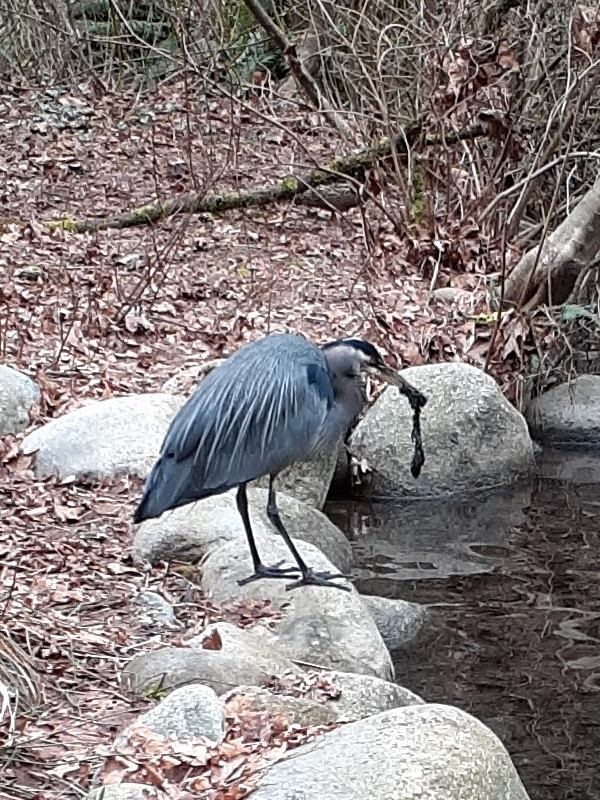
Heron in Vanier Park, Vancouver; Photo by Rescue Volunteer Liz G
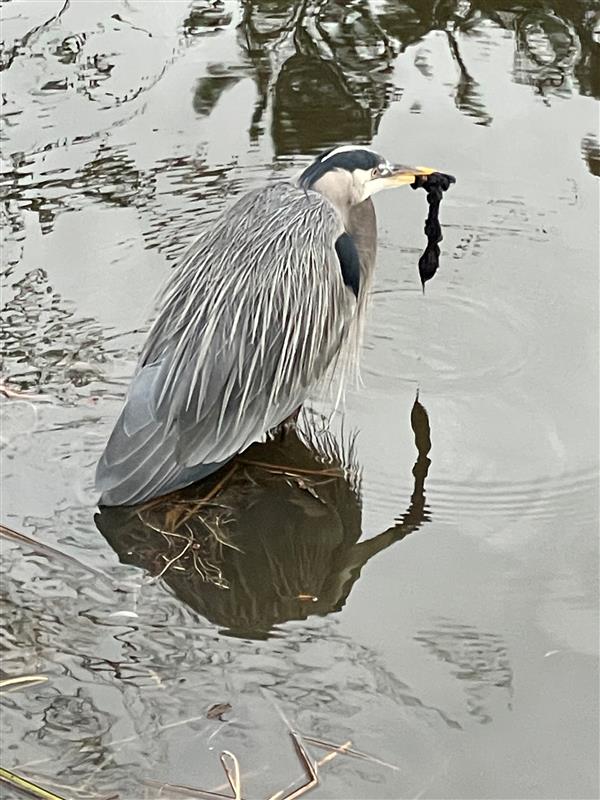
Heron in Murdo Frazer Duck Pond, North Vancouver; Photo by Rescue Volunteer Cathy
Upon intake, the netting was removed and it was revealed that there was no injury to their beak! The heron was in surprisingly good shape, just a little thin as hunting and eating with the entangled netting would have been difficult.
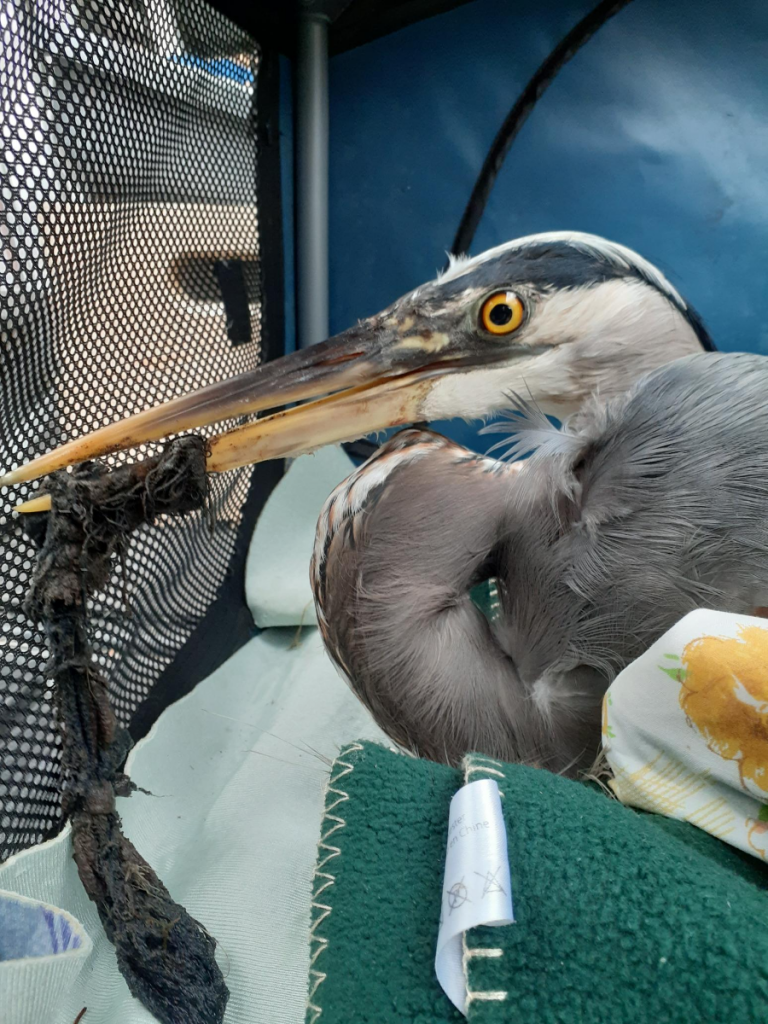
Photo by Rescue Volunteer Liz G.
This Great Blue Heron spent the next week recovering in our “Raptor Pen” – our largest enclosure that allowed them to maintain their flight muscles. This bird ate very well and quickly gained back some much-needed weight!
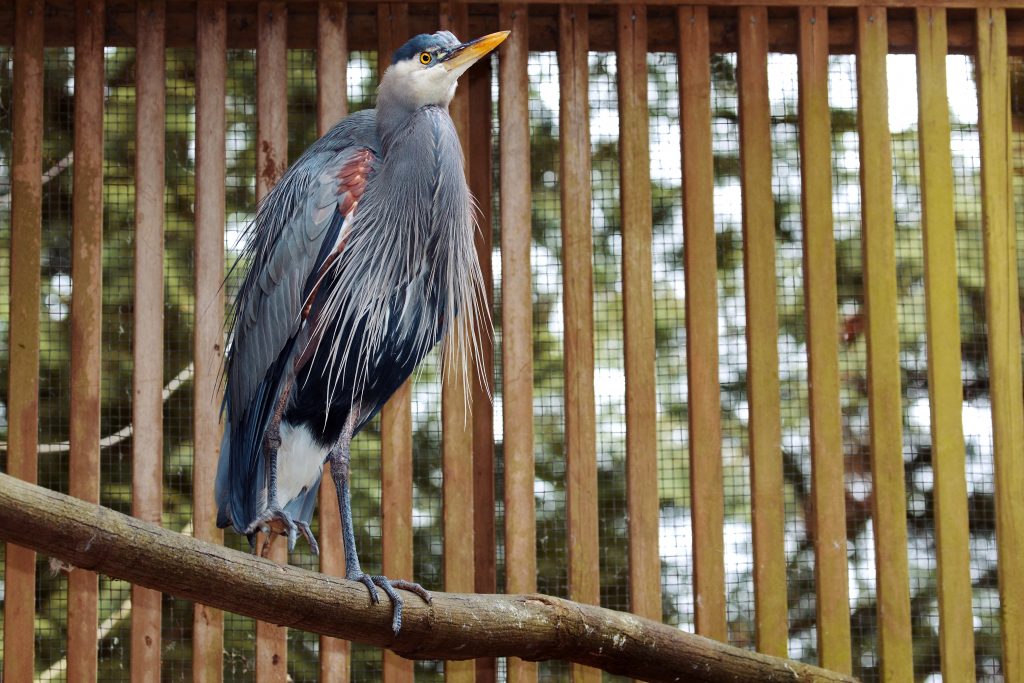
Photo by volunteer photographer Paul S.
After a short stay this heron had a clean bill of health and was released back to nature.
Watch the video of this Great Blue Herons release >
Complicated rescue efforts such as these are only made possible thanks to the generous donations of wildlife lovers like you.
Thanks to the continued support of wildlife lovers like you, this Great Blue Heron gets a second chance at a natural life. Thank you!
At the beginning of June, Wildlife Rescue received possibly the cutest little duckling. Found orphaned on the side of the highway with no parents or siblings in sight, this little one was transported all the way from Whistler to Wildlife Rescue hospital. After a thorough health inspection, it was determined this bird was healthy, just slightly dehydrated from its long journey from Whistler to Burnaby.
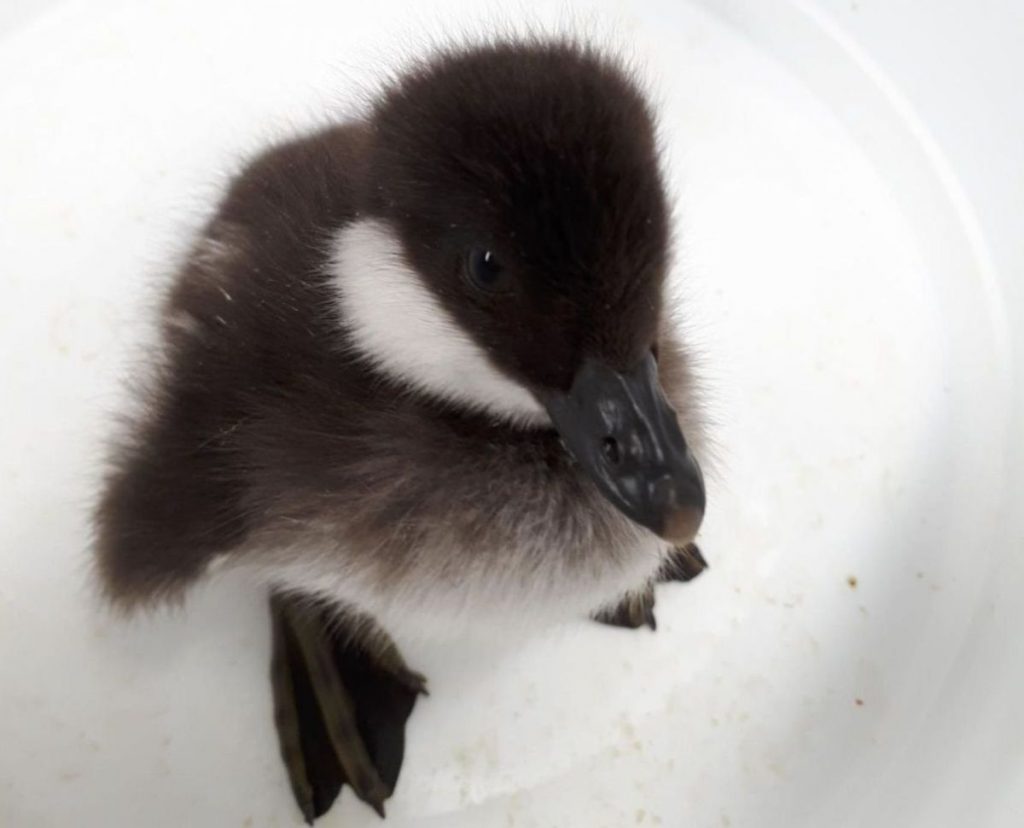
In circumstances like these, the best plan of action for healthy ducklings is to return them to their parents or foster them with another family immediately. Wildlife Rescue Support Centre staff and volunteers worked diligently for 7-days straight trying to find a suitable family to foster this little duckling with, even venturing back out to Whistler to look for a family, but there was no hope.
The orphaned duckling remained at Wildlife Rescue, where it was raised by Wildlife Rescue staff and volunteers. To provide a supportive family group environment for this duckling, they were housed with Wood Ducks who make great companions.
Caring for Sea Ducks is complicated and intensive due to their unique biology and natural behaviours.
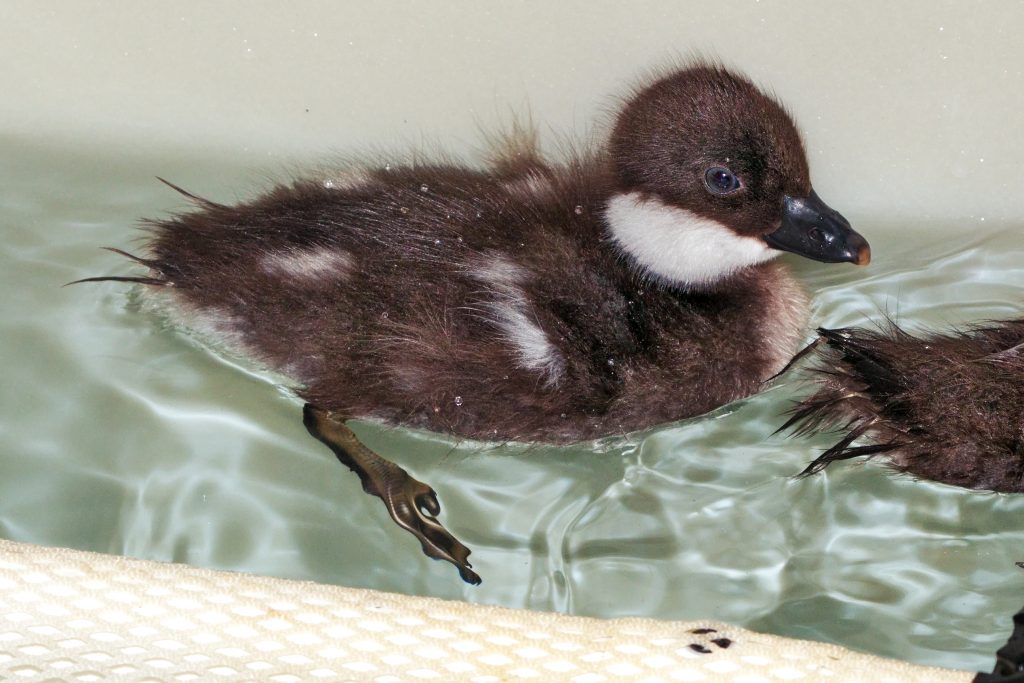
June 18th, 2021
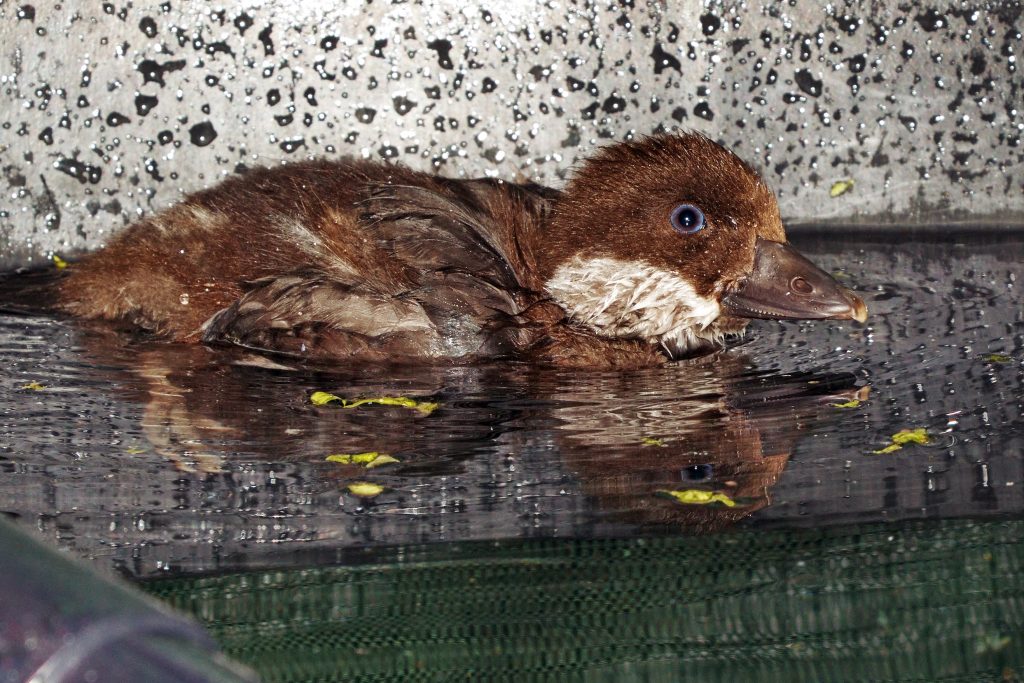
July 2nd, 2021
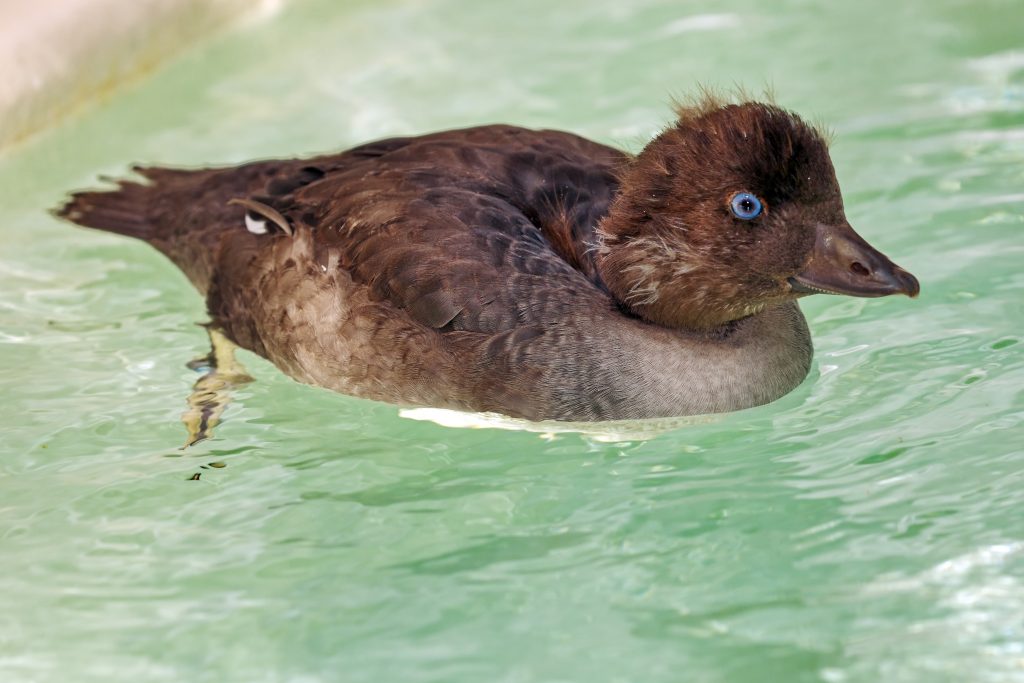
July 23rd, 2021
The Barrow’s Goldeneye (previously thought to be a Common Goldeneye) now looks like a completely different bird! Duckling Goldeneyes have dark heads with fluffy cream-white throats (as seen above). This juvenile duck lost its baby colouring, and developed mostly brown plumage! Immature Goldeneyes still lack the namesake golden-eyes of adults.
After almost two months in care, our Goldeneye was released back to nature. She took off immediately, spreading her wings out, happy to be back in nature where she belongs. Good luck little one!
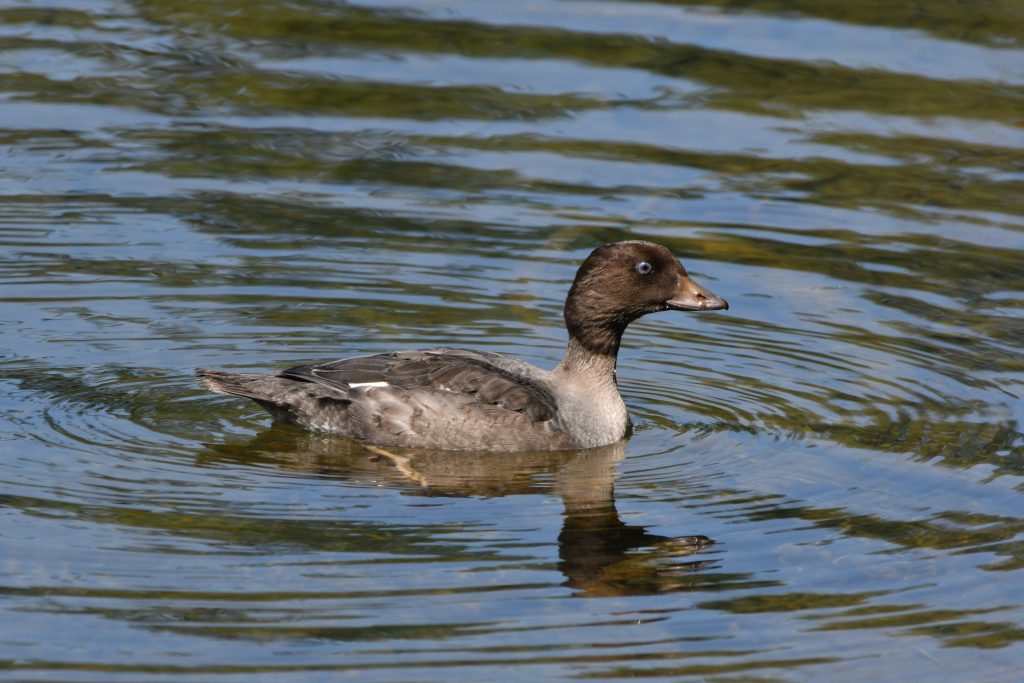
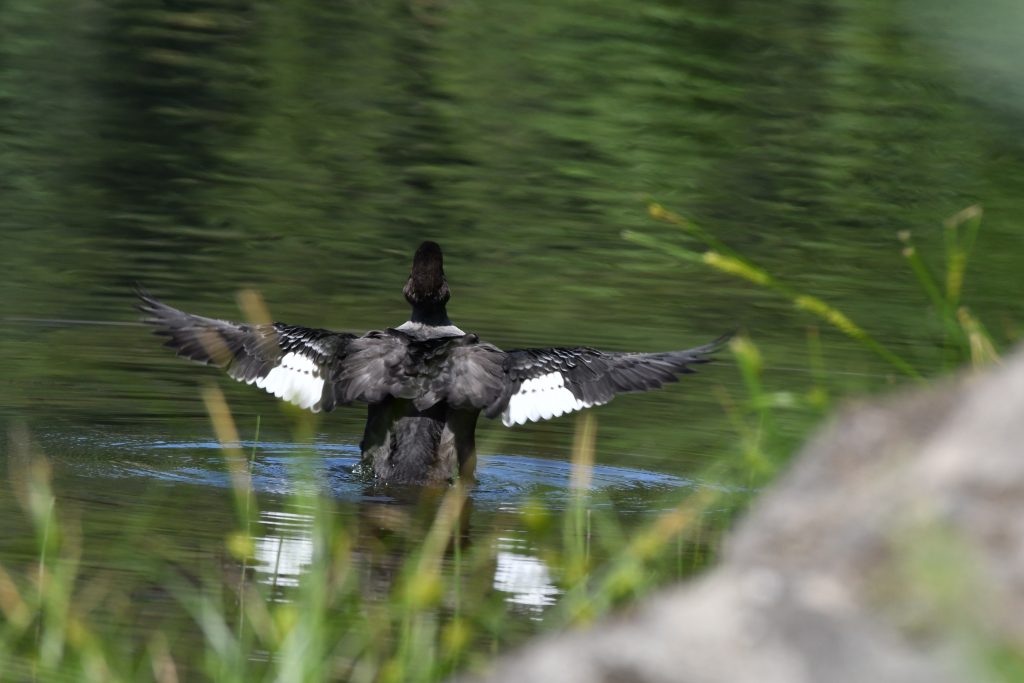
After an extended stay in care, the Common Raven from Haida Gwaii has been successfully released back to nature.
Glue traps are a pest control measure using glue as the method of trapping. The pest gets caught in the glue and then the trap is thrown away. There are two different types of glue traps; flypaper and glue-tray mouse traps.
While they seem simple, glue traps are one of the most inhumane methods of pest control. The animal, once caught in the trap, usually dies of starvation and dehydration over several days. The traps can also snare other wildlife. Since flypaper traps insects, insect-loving birds can become entangled in the flypaper while attempting to feed.
Double-crested cormorants make their nesting homes on the coastlines of southern BC. They are an iridescent greenish-black, with a bright yellow beak, and white tufts over their eyes during the breeding season. They like to hang out on rocky shorelines and dive for fish.
Spring is baby bird season! With an abundance of life outside, it is a great time to go birdwatching and enjoy nature’s busy season!
Recently, a wildlife lover came across a Fledgling Common Raven. The sight of the big beautiful bird caught their attention and they stopped to watch for a while. However, the bird started to concern the individual as it seemed as if the bird may be injured. It was hopping on the ground, unable to fly off so the concerned individual caught the corvid and brought it to Wildlife Rescue.
Every year, signs of spring fill the air as we feel the temperatures lifting, hear the chorus of year-round and migratory birds returning and the smell of fresh green grass as we step outside. It’s the perfect time to welcome this revitalizing energy into your backyard by preparing for these feathered friends.
In British Columbia Chickadees, Sparrows, Starlings, Robins, Northern Flickers, Bushtits, Finches, Steller’s Jay and Hummingbirds are a few of the common backyard birds looking for mates and shelter to thrive during the busy season.
A magnificent sight on British Columbia’s coastline, Great Blue Herons are a symbol of the brilliance of nature with their wide wings, “S” shaped necks and beautiful grey-blue feathers. Their peacefully still stance in the water and their incredible blue plumes set them apart.
Recently, a Great Blue Heron was admitted into Wildlife Rescue’s care after being found trapped and hanging from a tree. Thankfully, after being treated with pain medication and rest, the Great Blue Heron was able to be released back to nature where it belongs.
Found entangled in netting, a barn owl was recently brought to Wildlife Rescue in critical condition where the non-responsive animal was treated for dehydration and hypothermia. Unfortunately, cases like this one are common – netting such as plastic six-pack rings and even single-use masks can be fatal for wildlife. In fact, barn owls are so at-risk that they are featured as one of the many species on British Columbia’s red-list.